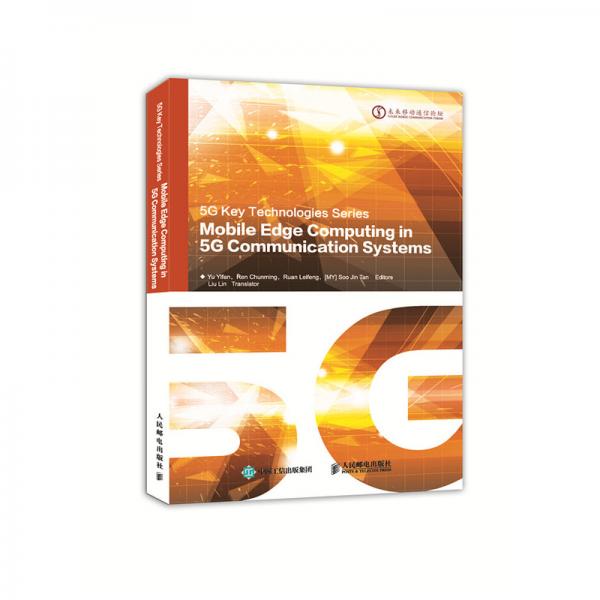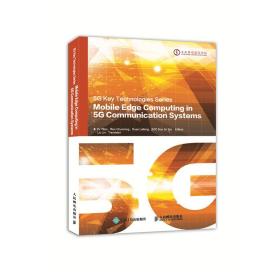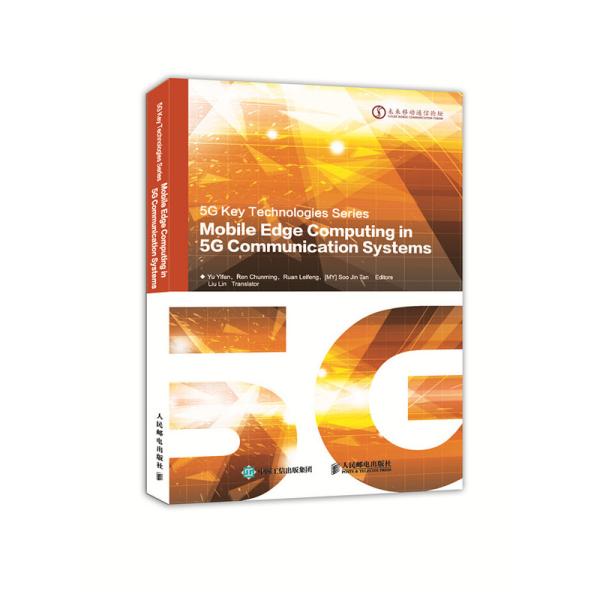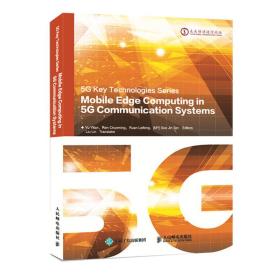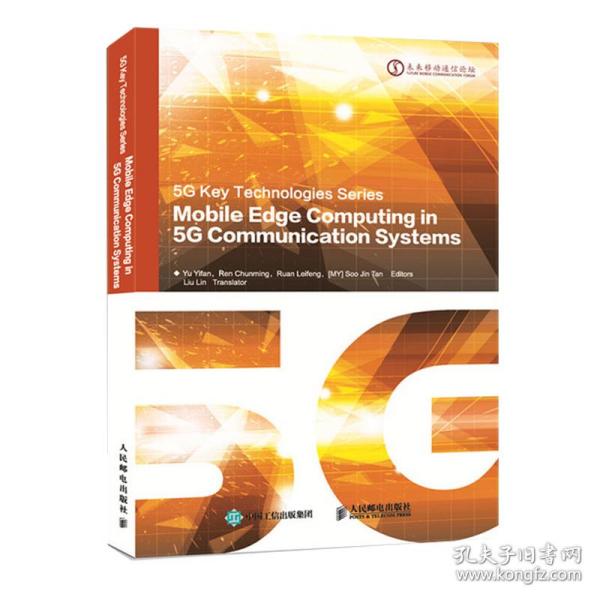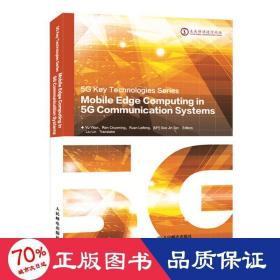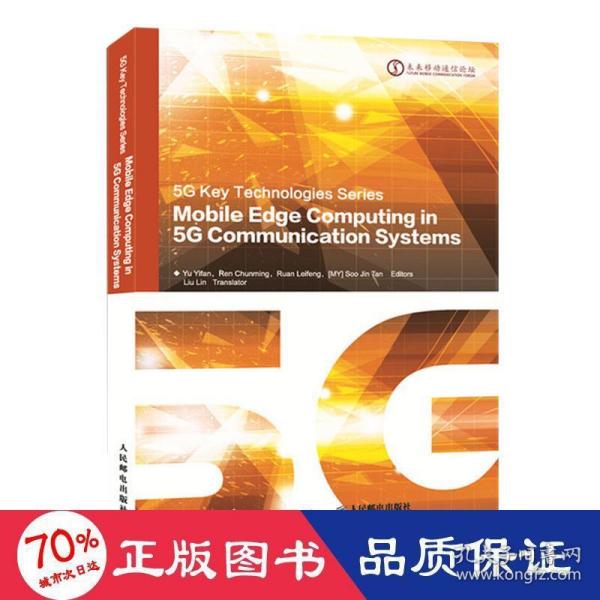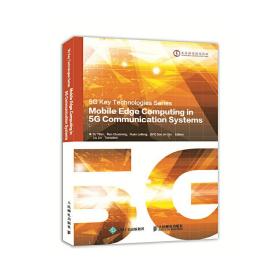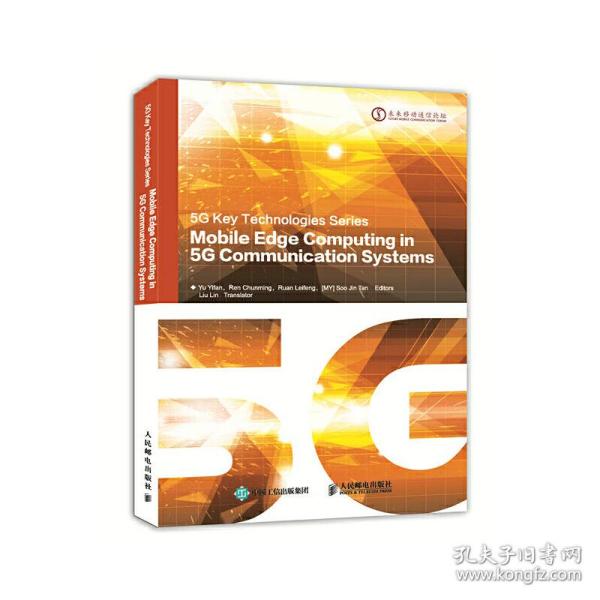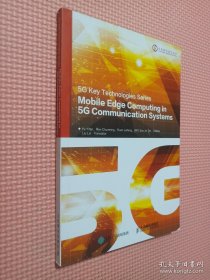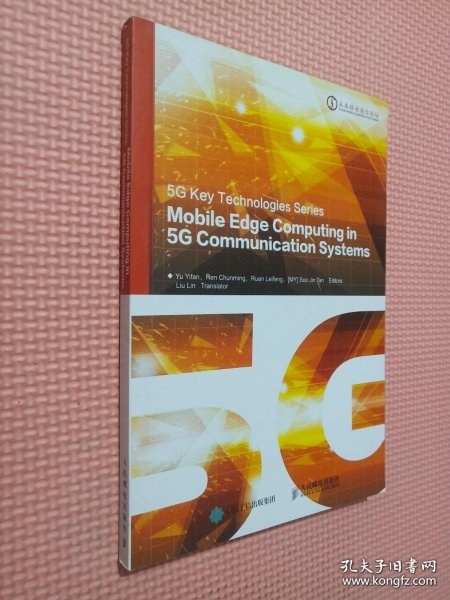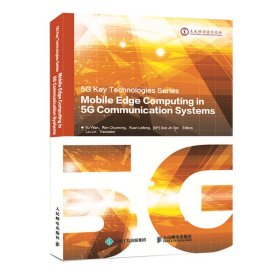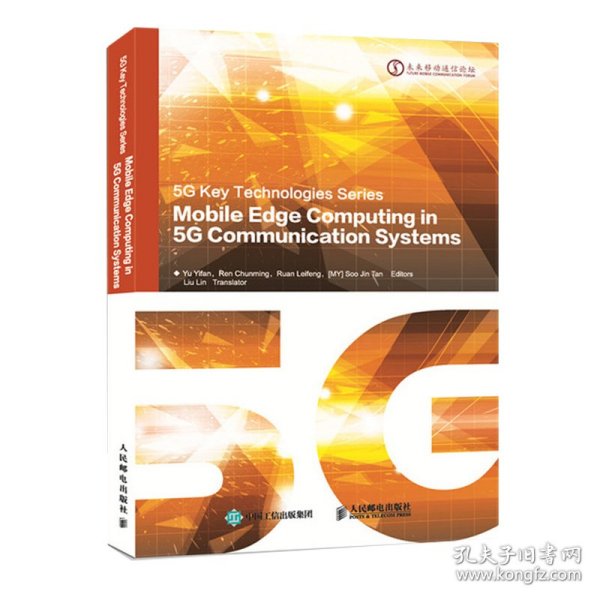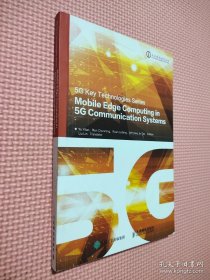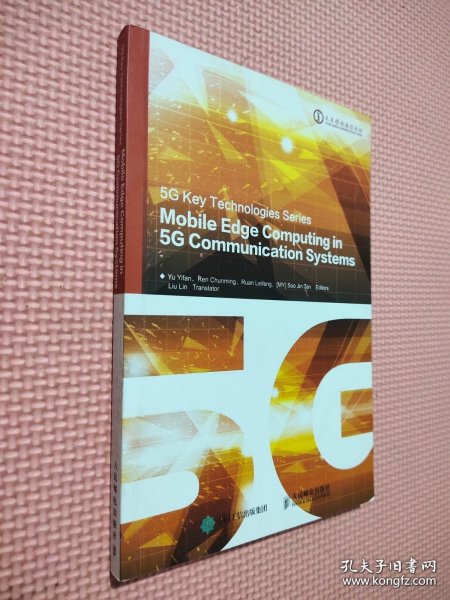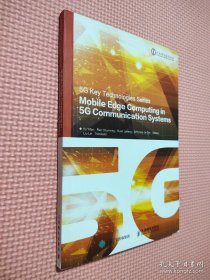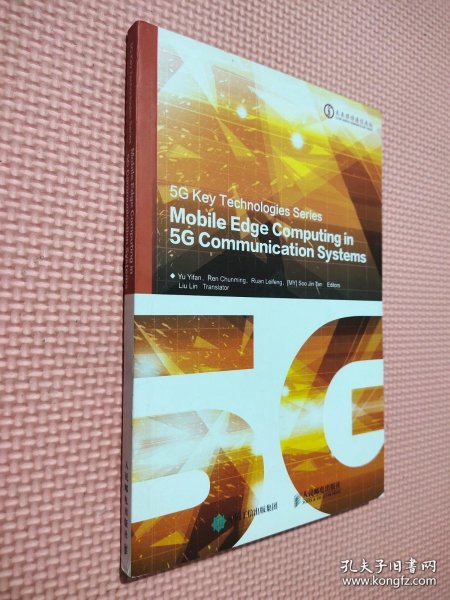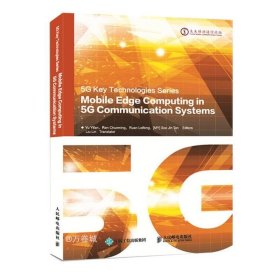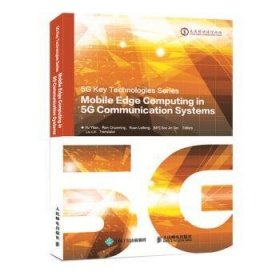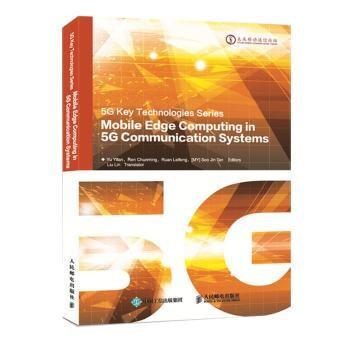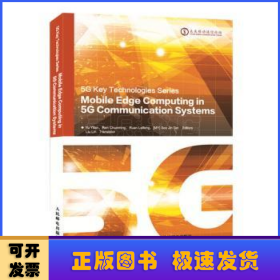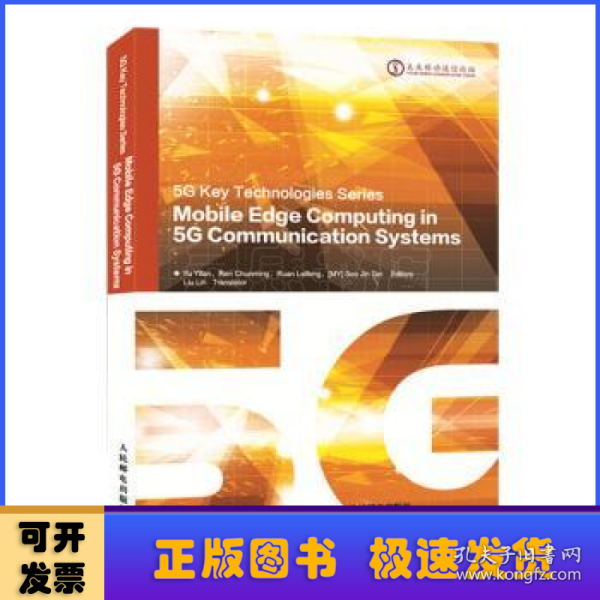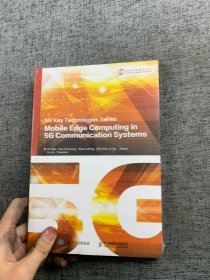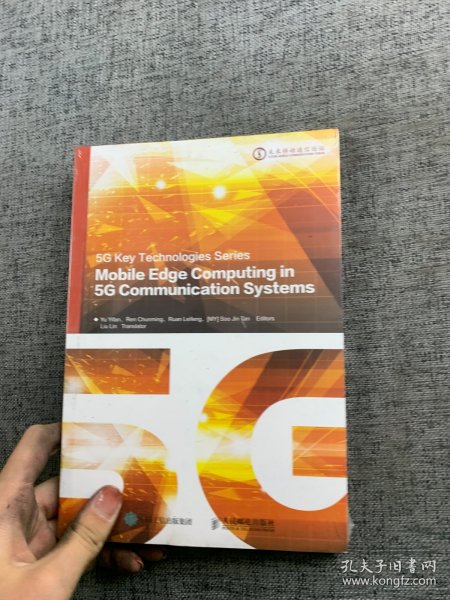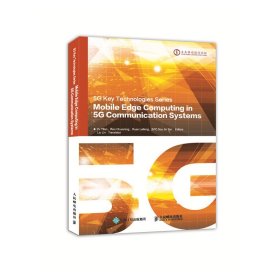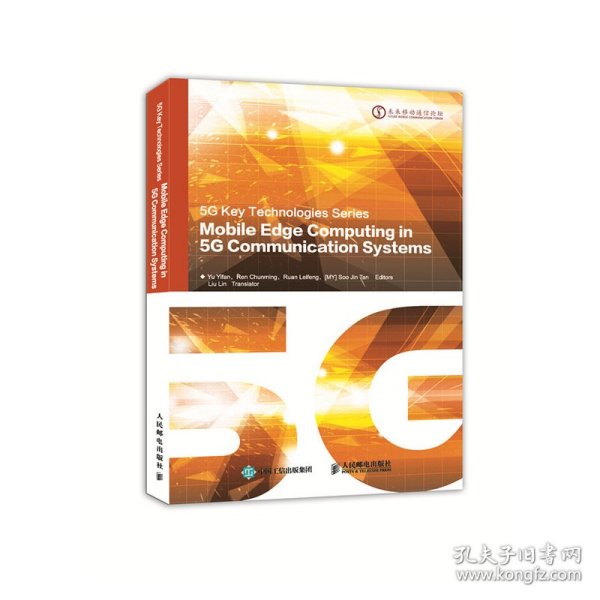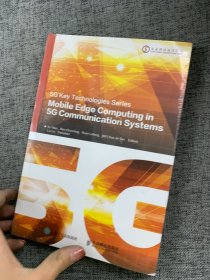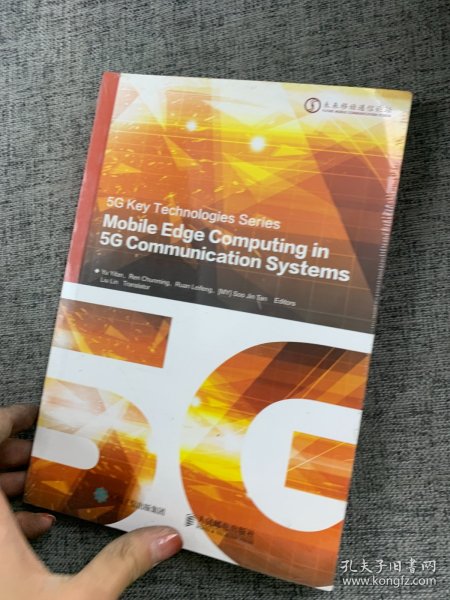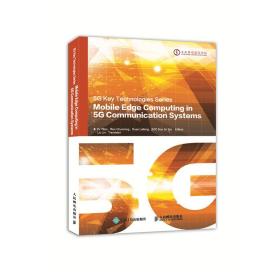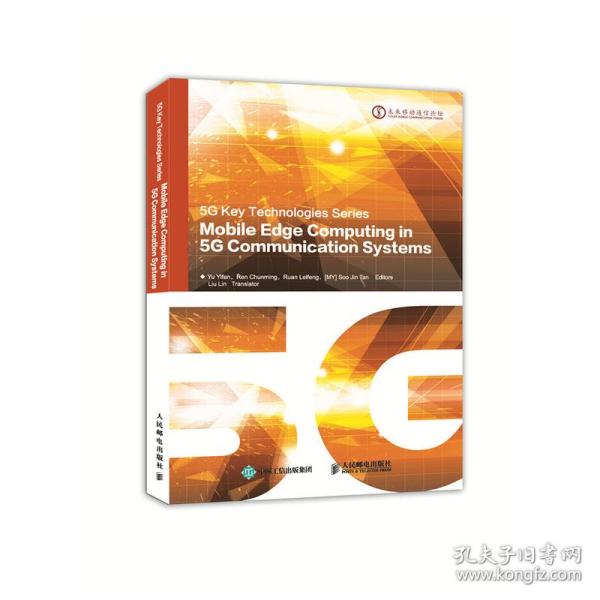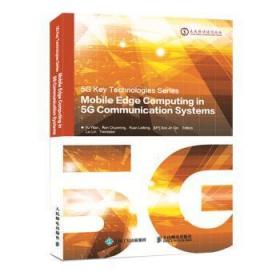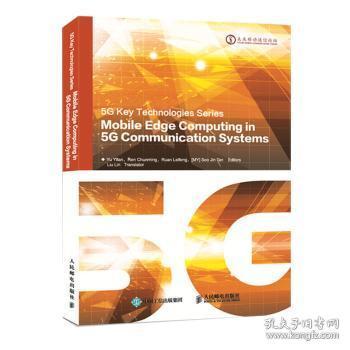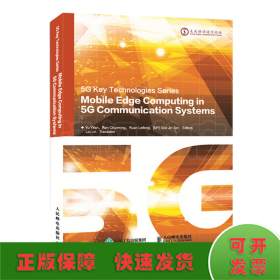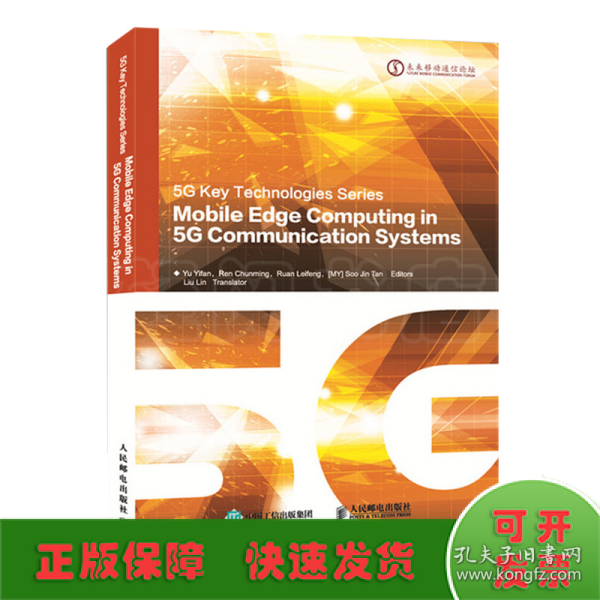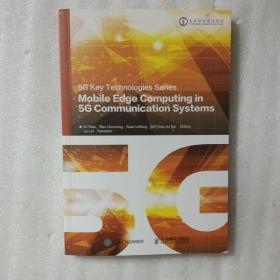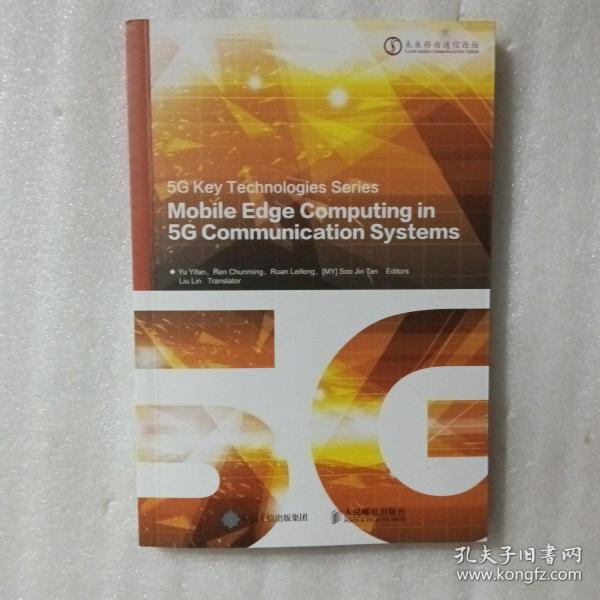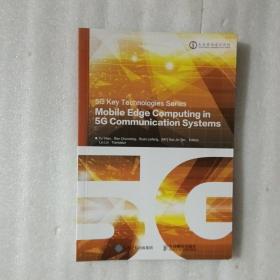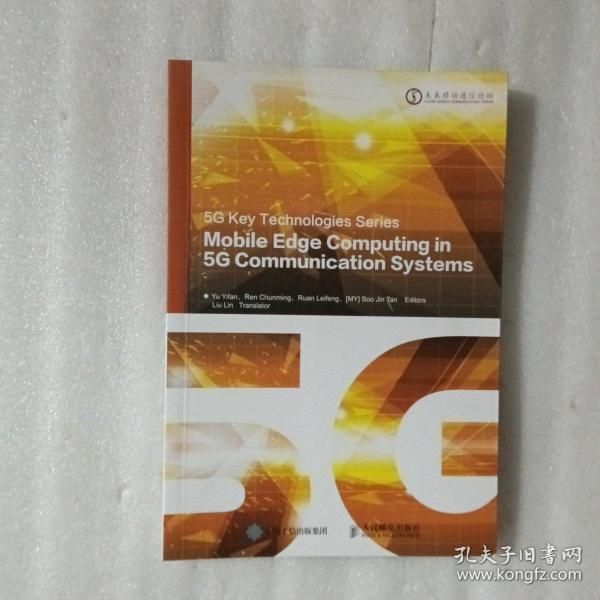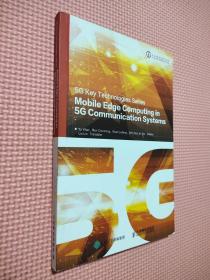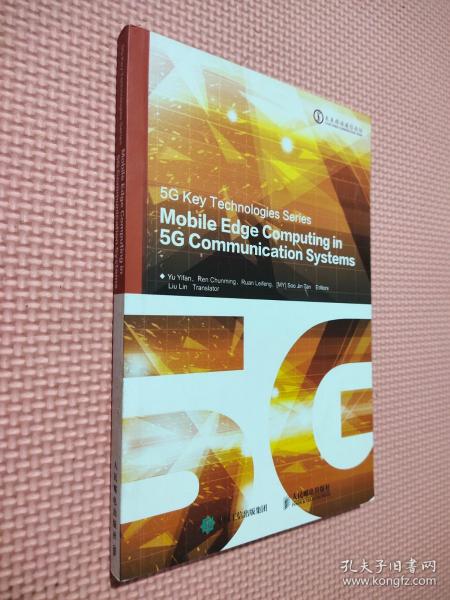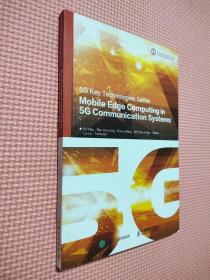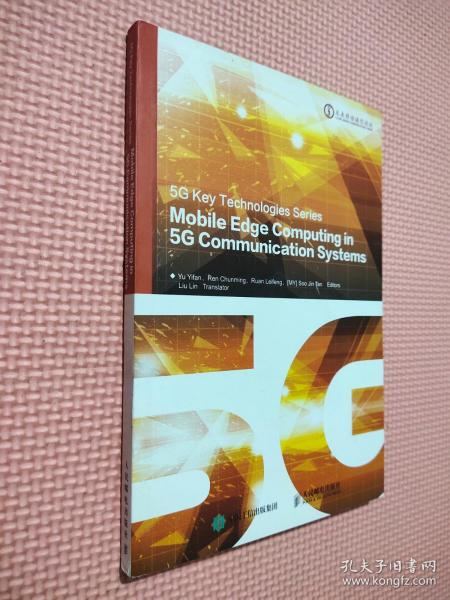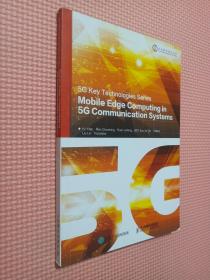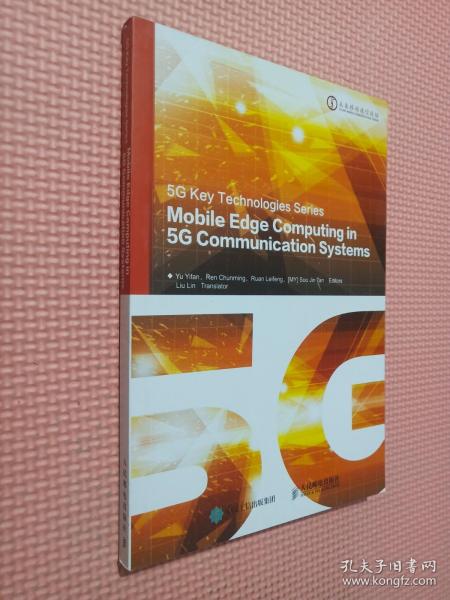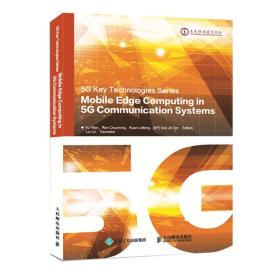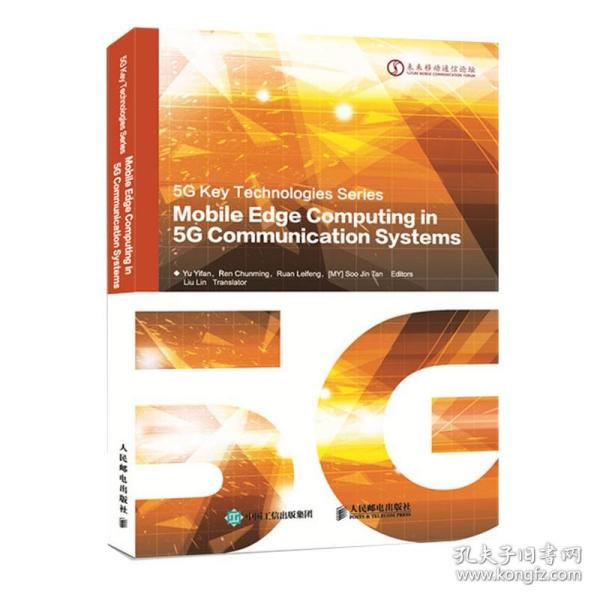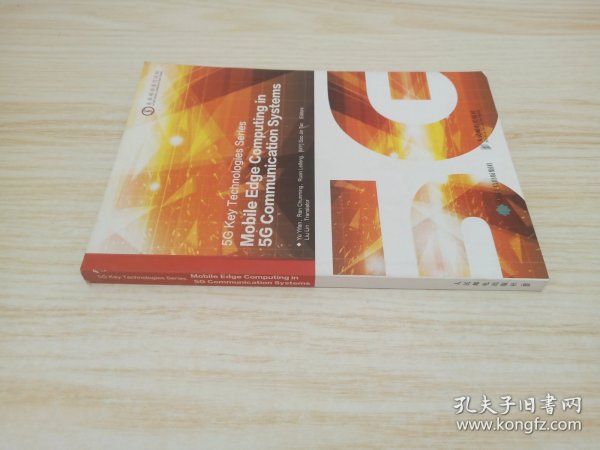MobileEdgeComputingin5GCommunicationSystems
出版时间:
2019-05
版次:
1
ISBN:
9787115494054
定价:
59.00
装帧:
平装
开本:
32开
纸张:
胶版纸
页数:
190页
1人买过
-
首先从移动边缘计算产生的背景及历史出发,阐述移动边缘计算的基本概念,并结合5G网络发展及运营商转型的现状,探讨移动边缘计算的发展方向;接着讲述与移动边缘计算相关的关键使能技术;然后对移动边缘计算的部署场景及应用实例进行总结,并给出相关产业及标准的进展情况;描述英特尔公司针对移动边缘计算发布的网络边缘虚拟化开发套件。 俞一帆,男,1979年1月出生,于2006年在北京邮电大学获工学博士学位,高级工程师。长期从事通信与计算机网络的理论与技术研究、设备开发工作。 任春明,男,于1999年在北京理工大学获得机电工程学位。从事嵌入式和通讯设备开发工作超过15年,目前就职于英特尔网络平台事业部,参与移动边缘计算,CRAN等网络平台技术研发管理工作。 Chapter 1 Overview 5
1.1 The origin of Mobile Edge Computing 5
1.2 5G network development and operator transformation 10
References 15
16
Chapter 2 MEC Overview 16
16
2.1 Overall system architecture 17
2.1.1 Basic system composition 17
2.1.2 Basic system environment 19
2.2 Detailed explanation of system components 20
2.2.1 Routing subsystem 20
2.2.2 Capacity opening subsystem 24
2.2.4 Edge cloud infrastructure 31
2.3 The influence on the evolution of 5G network 32
2.3.1 Local data distribution 34
2.3.2 Local policy control 36
2.3.3 Local billing 36
References 37
39
Chapter 3 Edge routing technology 39
3.1 Local data distribution 40
3.1.1 Traffic offload 40
3.1.2 LIPA/SIPTO 42
3.1.3 Packet filter 43
3.2 Mobility support 46
3.2.1 Coordinated SIPTO 47
3.2.2 IP Flow Mobility 47
3.2.3 Distributed mobility management 48
References 50
51
Chapter 4 Wireless Network Capacity Opening 51
4.1 Capacity opening architecture 53
4.1.1 3GPP SCEF architecture 53
4.1.2 ETSI MEC capacity opening architecture 55
4.1.3 Capacity opening architecture of IMT-2020 56
4.2 Capacity opening realization 58
4.2.1 Opening interface 58
4.2.2 Opening method 60
4.3 Capacity opening content 66
References 68
69
Chapter 5 69
Edge computing platform 69
and computing technology 69
5.1 Basic hardware environment 70
5.1.1 Servers 70
5.1.2 Network adapter 71
5.1.3 Memory 72
5.1.4 Hardware accelerator 73
5.2 Basic software environment 74
5.2.1 Cloud platform management 74
5.2.2 Host virtualization 76
5.2.3 Switch virtualization 77
5.2.4 Hardware accelerator virtualization 78
5.3 Edge computing technology 79
5.3.1 Micro Cloud 79
5.3.2 Cloudlet 80
5.3.3 Fog computing 81
References 87
88
Chapter 6 88
Deployment scenarios and application examples 88
6.1 Scenario 1: Deployment based on LTE base station 89
6.2 Scenario 2: Deployment based on convergent points of base stations 89
6.3 Scenario 3: deployment based on Radio Network Controller 90
6.4 Application examples 91
6.4.1 Location-based services 91
6.4.2 Augmented reality 92
6.4.3 Video choreography and analysis 93
6.4.4 Content acceleration based on wireless perception 93
6.4.5 Performance optimization based on application perception 94
6.4.6 Gateway of Internet of Things 95
6.4.7 Edge CDN 96
6.4.8 Application of Enterprise Networks 97
6.4.9 Internet of Vehicles 98
6.4.10 Computing assistance 99
References 100
101
Chapter 7 101
Standards and Industrial Development 101
7.1 Standard development 102
7.1.1 ETSI 102
7.1.2 3GPP 105
7.1.5 OpenFog Alliance 108
7.2 Telecom manufacturers 109
7.2.1 NOKIA 109
7.2.2 ZTE 110
7.2.3 DT Mobile 110
7.2.4 Huawei 111
7.2.5 Baicells 111
7.2.6 Saguna Networks 112
7.3 IT manufacturers 113
7.3.1 Intel 113
7.3.2 ADLINK 113
7.3.3 Artesyn 113
7.3.4 ACS 113
7.3.5 IneoQuest 114
7.4 Internet manufacturers 115
7.4.1 Amazon 115
7.4.2 Microsoft 115
References 117
118
Chapter 8 118
Intel Network Edge 118
Virtualization Development Kit 118
8.1 Kit Profile 119
8.2 Kit Architecture 119
8.2.1 Architectural overview 120
8.2.2 Detailed explanation of function modules 121
8.2.3 Application programming interface 124
References 127
-
内容简介:
首先从移动边缘计算产生的背景及历史出发,阐述移动边缘计算的基本概念,并结合5G网络发展及运营商转型的现状,探讨移动边缘计算的发展方向;接着讲述与移动边缘计算相关的关键使能技术;然后对移动边缘计算的部署场景及应用实例进行总结,并给出相关产业及标准的进展情况;描述英特尔公司针对移动边缘计算发布的网络边缘虚拟化开发套件。
-
作者简介:
俞一帆,男,1979年1月出生,于2006年在北京邮电大学获工学博士学位,高级工程师。长期从事通信与计算机网络的理论与技术研究、设备开发工作。 任春明,男,于1999年在北京理工大学获得机电工程学位。从事嵌入式和通讯设备开发工作超过15年,目前就职于英特尔网络平台事业部,参与移动边缘计算,CRAN等网络平台技术研发管理工作。
-
目录:
Chapter 1 Overview 5
1.1 The origin of Mobile Edge Computing 5
1.2 5G network development and operator transformation 10
References 15
16
Chapter 2 MEC Overview 16
16
2.1 Overall system architecture 17
2.1.1 Basic system composition 17
2.1.2 Basic system environment 19
2.2 Detailed explanation of system components 20
2.2.1 Routing subsystem 20
2.2.2 Capacity opening subsystem 24
2.2.4 Edge cloud infrastructure 31
2.3 The influence on the evolution of 5G network 32
2.3.1 Local data distribution 34
2.3.2 Local policy control 36
2.3.3 Local billing 36
References 37
39
Chapter 3 Edge routing technology 39
3.1 Local data distribution 40
3.1.1 Traffic offload 40
3.1.2 LIPA/SIPTO 42
3.1.3 Packet filter 43
3.2 Mobility support 46
3.2.1 Coordinated SIPTO 47
3.2.2 IP Flow Mobility 47
3.2.3 Distributed mobility management 48
References 50
51
Chapter 4 Wireless Network Capacity Opening 51
4.1 Capacity opening architecture 53
4.1.1 3GPP SCEF architecture 53
4.1.2 ETSI MEC capacity opening architecture 55
4.1.3 Capacity opening architecture of IMT-2020 56
4.2 Capacity opening realization 58
4.2.1 Opening interface 58
4.2.2 Opening method 60
4.3 Capacity opening content 66
References 68
69
Chapter 5 69
Edge computing platform 69
and computing technology 69
5.1 Basic hardware environment 70
5.1.1 Servers 70
5.1.2 Network adapter 71
5.1.3 Memory 72
5.1.4 Hardware accelerator 73
5.2 Basic software environment 74
5.2.1 Cloud platform management 74
5.2.2 Host virtualization 76
5.2.3 Switch virtualization 77
5.2.4 Hardware accelerator virtualization 78
5.3 Edge computing technology 79
5.3.1 Micro Cloud 79
5.3.2 Cloudlet 80
5.3.3 Fog computing 81
References 87
88
Chapter 6 88
Deployment scenarios and application examples 88
6.1 Scenario 1: Deployment based on LTE base station 89
6.2 Scenario 2: Deployment based on convergent points of base stations 89
6.3 Scenario 3: deployment based on Radio Network Controller 90
6.4 Application examples 91
6.4.1 Location-based services 91
6.4.2 Augmented reality 92
6.4.3 Video choreography and analysis 93
6.4.4 Content acceleration based on wireless perception 93
6.4.5 Performance optimization based on application perception 94
6.4.6 Gateway of Internet of Things 95
6.4.7 Edge CDN 96
6.4.8 Application of Enterprise Networks 97
6.4.9 Internet of Vehicles 98
6.4.10 Computing assistance 99
References 100
101
Chapter 7 101
Standards and Industrial Development 101
7.1 Standard development 102
7.1.1 ETSI 102
7.1.2 3GPP 105
7.1.5 OpenFog Alliance 108
7.2 Telecom manufacturers 109
7.2.1 NOKIA 109
7.2.2 ZTE 110
7.2.3 DT Mobile 110
7.2.4 Huawei 111
7.2.5 Baicells 111
7.2.6 Saguna Networks 112
7.3 IT manufacturers 113
7.3.1 Intel 113
7.3.2 ADLINK 113
7.3.3 Artesyn 113
7.3.4 ACS 113
7.3.5 IneoQuest 114
7.4 Internet manufacturers 115
7.4.1 Amazon 115
7.4.2 Microsoft 115
References 117
118
Chapter 8 118
Intel Network Edge 118
Virtualization Development Kit 118
8.1 Kit Profile 119
8.2 Kit Architecture 119
8.2.1 Architectural overview 120
8.2.2 Detailed explanation of function modules 121
8.2.3 Application programming interface 124
References 127
查看详情
-
全新
广东省广州市
平均发货20小时
成功完成率86.47%
-
全新
江苏省无锡市
平均发货10小时
成功完成率92.91%
-
全新
河北省保定市
平均发货23小时
成功完成率92.58%
-
全新
湖南省长沙市
平均发货42小时
成功完成率83.44%
-
全新
北京市丰台区
平均发货23小时
成功完成率88.57%
-
全新
北京市通州区
平均发货9小时
成功完成率88.67%
-
全新
四川省成都市
平均发货25小时
成功完成率87.14%
-
全新
北京市西城区
平均发货29小时
成功完成率90.38%
-
全新
江苏省苏州市
平均发货9小时
成功完成率95.68%
-
八五品
河北省衡水市
平均发货14小时
成功完成率96.18%
-
全新
天津市西青区
平均发货14小时
成功完成率90.42%
-
八五品
河北省衡水市
平均发货14小时
成功完成率96.18%
-
八五品
河北省衡水市
平均发货14小时
成功完成率96.18%
-
全新
江苏省无锡市
平均发货8小时
成功完成率95.77%
-
全新
北京市东城区
平均发货29小时
成功完成率83.9%
-
全新
山东省泰安市
平均发货23小时
成功完成率85.42%
-
全新
山东省泰安市
平均发货23小时
成功完成率85.42%
-
全新
北京市丰台区
平均发货8小时
成功完成率90.4%
-
全新
上海市黄浦区
平均发货11小时
成功完成率94.51%
-
九五品
广东省广州市
平均发货12小时
成功完成率96.45%
-
全新
江苏省无锡市
平均发货18小时
成功完成率94.5%
-
九五品
广东省广州市
平均发货12小时
成功完成率96.45%
-
全新
北京市西城区
平均发货28小时
成功完成率88.38%
-
全新
天津市津南区
平均发货13小时
成功完成率94.1%
-
全新
广东省广州市
平均发货8小时
成功完成率94.63%
-
全新
北京市朝阳区
平均发货14小时
成功完成率85.41%
-
全新
北京市通州区
平均发货17小时
成功完成率94.4%
-
全新
江苏省无锡市
平均发货18小时
成功完成率94.5%
-
全新
江苏省南京市
平均发货16小时
成功完成率82.85%
-
全新
江苏省南京市
平均发货8小时
成功完成率96.65%
-
全新
江苏省南京市
平均发货7小时
成功完成率97.83%
-
全新
天津市河东区
平均发货29小时
成功完成率90.01%
-
全新
北京市朝阳区
平均发货9小时
成功完成率96.79%
-
全新
河北省保定市
平均发货15小时
成功完成率91.16%
-
九五品
北京市朝阳区
平均发货35小时
成功完成率88.99%
-
九五品
北京市朝阳区
平均发货35小时
成功完成率88.99%
-
八五品
河北省衡水市
平均发货10小时
成功完成率97.36%
-
八五品
河北省衡水市
平均发货10小时
成功完成率97.36%
-
八五品
河北省衡水市
平均发货10小时
成功完成率97.36%
-
全新
北京市朝阳区
平均发货13小时
成功完成率94.24%
-
全新
广东省广州市
平均发货15小时
成功完成率88.89%
-
全新
广东省广州市
平均发货15小时
成功完成率90.21%
-
全新
广东省广州市
平均发货21小时
成功完成率80.21%
-
全新
广东省广州市
平均发货18小时
成功完成率89.05%
-
八五品
河北省衡水市
平均发货9小时
成功完成率97.08%
-
全新
广东省广州市
平均发货7小时
成功完成率89.93%
-
全新
江苏省徐州市
平均发货12小时
成功完成率92.13%
-
全新
北京市房山区
平均发货13小时
成功完成率90.97%
-
八五品
河南省郑州市
平均发货25小时
成功完成率61.15%
-
全新
广东省广州市
平均发货9小时
成功完成率87.76%

 占位居中
占位居中

